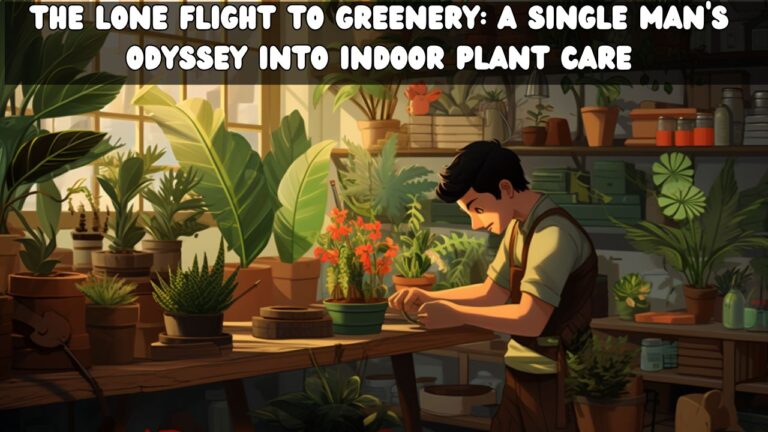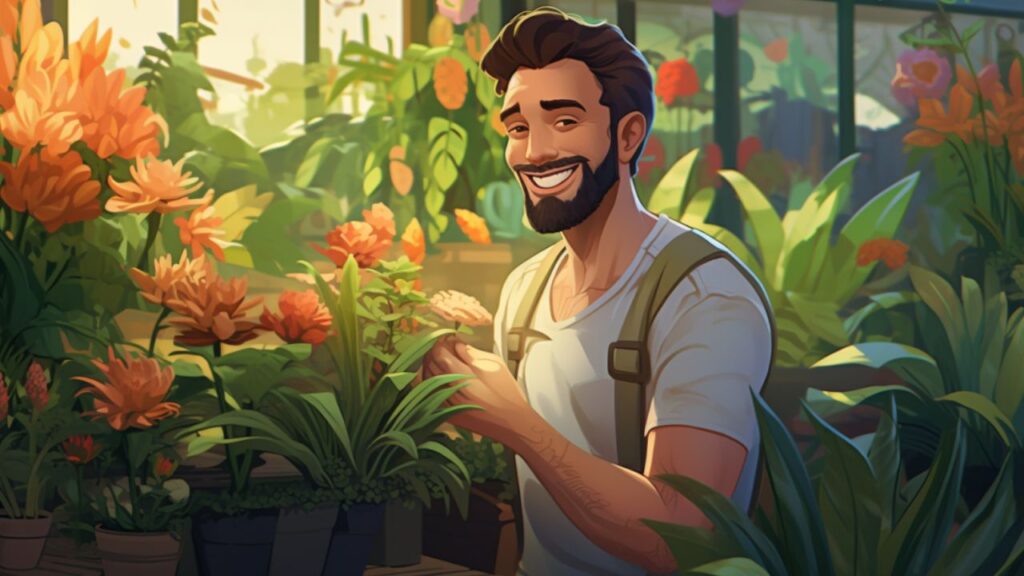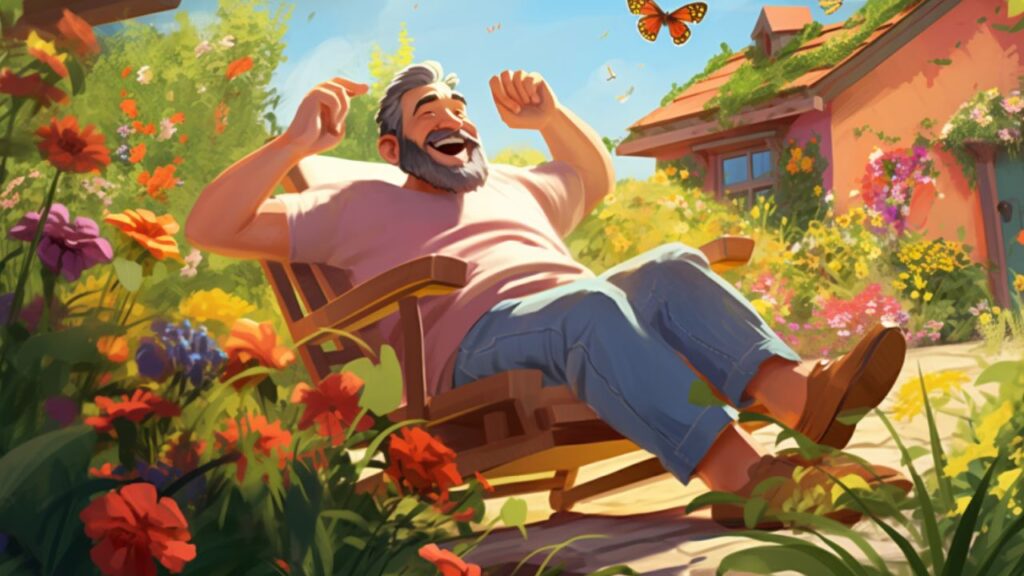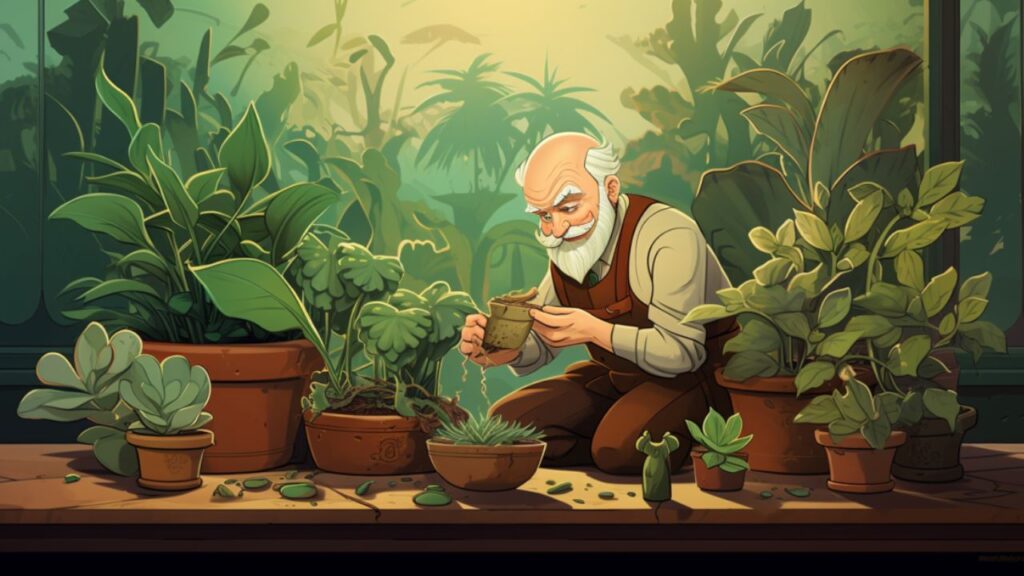
The rumbling sounds of city life, tall buildings, and endless urban sprawl might seem antithetical to the quiet, serene life of plants. Yet, amidst this concrete jungle, more and more single men are realizing that introducing a touch of greenery to their living spaces is not just a design choice—it’s a way of life. From the loft apartments in bustling downtowns to the more quaint bachelor pads in the suburbs, plants are becoming synonymous with contemporary living. But why?
As LoneAviator, my journey towards becoming a plant parent began not out of necessity, but from a craving for a connection with nature amidst the metallic world I was ensconced in. The first and most obvious benefit of having indoor plants is their ability to purify the air. Houseplants are natural air filters. They absorb pollutants through their leaves and roots, converting them into pure oxygen, which is then released back into our homes. This is not just a scientific fact—it’s something you can feel. Breathing in that fresh, plant-purified air gives a sense of invigoration, a daily dose of nature’s own rejuvenation.
Beyond just the tangible benefits, plants have a profound impact on our mental well-being. Tending to them, watching them grow, and seeing them thrive can ease stress and instill a sense of tranquility. In a world where notifications never cease and the pace of life is unrelenting, the silent, steadfast growth of a plant offers a much-needed pause—a moment of reflection and serenity.
As I watered, pruned, and repotted, I realized that my journey as a plant parent mirrored my journey in personal growth. Each plant, with its unique needs and growth patterns, taught me patience, persistence, and the beauty of slow and steady progress. Overwatering—a result of excessive enthusiasm or anxiety—taught me about boundaries and the importance of giving space, not just to my plants but also to myself. The act of pruning, of letting go of the old to make way for new growth, found its parallels in my personal life as I learned to let go of past mistakes and embraced new opportunities.
Singlehood is a phase of exploration, of understanding oneself, and of building a foundation for the future. It’s a time of self-growth, challenges, and delightful discoveries. In many ways, the journey of single life is similar to plant parenting. Each plant you bring into your home becomes a reflection of a facet of your life—a silent witness to your triumphs, heartbreaks, and the mundane in-betweens.
Tending to plants while navigating the maze of single life can be immensely enriching. It teaches responsibility, nurtures empathy, and provides a daily reminder of the cyclical nature of life. A wilted leaf or a plant fighting against the odds to sprout a new shoot can serve as metaphors for our own struggles and triumphs. And just as we tend to our plants, we learn to tend to our relationships, our passions, and ourselves.
So, as we embark on this journey of understanding plants and their place in the life of a single man, remember: every plant has a story, a lesson, and a reflection of you. Are you ready to uncover yours?

From the towering trees of rainforests to the tiniest of ferns adorning a rock face, the plant kingdom is vast and varied. But when you’re a single man beginning your journey into the world of indoor gardening, the sheer diversity of choices can feel overwhelming. Not every plant suits every environment, and certainly, not every plant aligns with every individual’s aesthetic or care capabilities. However, fret not. LoneAviator here to guide you through this green maze and help you discover plants that will not only thrive in your space but also resonate with your personal style.
When I first decided to become a plant parent, I was smitten by the most exotic of plants—only to find them withered in a short span. The lesson? Start simple. Here’s a curated list of plants that are not only forgiving to beginners but also delightful to care for:
Remember, while these plants are beginner-friendly, they each have their unique quirks and preferences, which brings us to our next point.
Being a good plant parent is akin to understanding a silent companion. Plants communicate through their leaves, stems, and growth patterns, and understanding their needs is key to a thriving green space. Here’s a quick breakdown:
For many, plants are not just about greenery but also about aesthetics. The right plant can accentuate your space, evoke specific moods, and reflect your personality.
For the Modern Minimalist: Consider plants like the Monstera Deliciosa with its split leaves or the tall Rubber Plant that boast bold, glossy leaves.
For the Vintage Lover: Ferns, with their delicate fronds, or the nostalgic African Violets, can add a touch of vintage charm.
For the Bohemian: Trailing plants like String of Pearls or Hanging Succulents can perfectly drape from shelves or be hung from ceilings, adding layers to your boho decor.
Remember, each plant, with its shape, color, and texture, can evoke specific feelings and moods. Choose ones that align with the vibe you wish to create.
In the end, choosing plants is a deeply personal experience. It’s about resonance, care capabilities, and the joy each green companion brings. So, as you embark on this verdant journey, I encourage you to listen to both your heart and your space. After all, isn’t that what being a great plant parent is all about?

As I delved deeper into the world of plants, LoneAviator realized that my journey was just as much about the green companions I chose as it was about the tools I equipped myself with. Just like you wouldn’t head out on a long-haul flight without the right gear, you shouldn’t dive into plant parenthood without a solid toolkit. It ensures your plants not only survive but thrive, transforming your home into a lush, vibrant haven.
The foundation of any healthy plant lies in its roots, and for the roots to be healthy, they need the right environment. This is where quality soil and the right pots come into play.
Watering might seem like the most straightforward part of plant care, but it’s more nuanced than you’d think.
You’ve got your plants, the right pots, quality soil, and you’re watering them just right. What’s next? Feeding them.
In the world of indoor gardening, tools and supplies are your co-pilots. They ensure you’re well-equipped to address your plants’ needs, setting both you and your green companions up for a successful journey together. Remember, it’s not just about having these tools, but understanding when and how to use them that makes all the difference.

Navigating the world of plant care, LoneAviator came to understand that it’s akin to flying through different terrains—some stretches are smooth, while others require sharp maneuvers. Whether you’re an aviation enthusiast like me or a grounded soul, this journey with your green co-pilots will be one of constant learning. Let’s make sure you’re well-prepared for any turbulence along the way.
Watering might seem simple, but it’s where many new plant parents often go wrong. Remember, each plant has its hydration preferences, and while some love a regular drink, others are more stoic, retaining water for longer periods.
Plants, much like humans, need nourishment to grow strong and healthy. Understanding their dietary needs is crucial to ensure they flourish.
Pruning isn’t just about aesthetics—it’s about plant health. Proper trimming can help your plants grow fuller, remove dead or dying growth, and even stimulate flowering.
Our green buddies, unfortunately, can fall prey to various pests and diseases. Catching these invaders early can save a lot of heartache later.
Plant care, much like flying, requires attention, knowledge, and a touch of intuition. But trust me, as you navigate this journey, the view—a thriving, verdant indoor garden—will be worth all the effort.

The bond between a pilot and his aircraft is based on a keen sense of understanding, of knowing when something sounds or feels off. Similarly, my journey as LoneAviator in the plant realm taught me to ‘listen’ to my plants. They may not speak in words, but they communicate loudly if only we’re attuned to their language. From the subtle tilt of a leaf to the stretching of a stem towards the light, every movement tells a story.
Leaves are the storytellers of the plant world. Their color, shape, and texture provide invaluable insights into the overall health of the plant.
Like us, plants have their rhythms, periods of energetic growth, and times of rest.
Plants have their way of sending out distress signals, and early intervention can make a world of difference.
Understanding your plants is like piecing together a silent conversation. With patience, attention, and a bit of intuition, you’ll soon become fluent in their green language. And believe me, the relationship you’ll cultivate is as enriching as any.

In my airborne adventures as LoneAviator, I’ve come to understand the significance of space. Like an aircraft needing ample sky to soar, plants too need room to flourish. The confines of a pot can sometimes restrict their growth, and just like upgrading to a bigger apartment or moving to a new city can offer renewed energy and potential, repotting can be a rejuvenating experience for your green friend.
Recognizing the signs that a plant is ready for a bigger home is the first step:
Transplanting a plant can be daunting, but with a methodical approach, it can be a breeze:
The care you provide after repotting is crucial to helping your plant adjust:
Just as you’d adjust to a new home or environment, so will your plants. Give them time, patience, and care. Celebrate this new phase of growth, both for them and for the bond you share.

From navigating challenging terrains to facing unpredictable weather, my life as LoneAviator has been about overcoming obstacles. Similarly, in the journey of plant parenthood, while the skies are often clear, there might be occasional turbulence. But just as every problem in the sky has a solution, every issue with your plants can be addressed with a bit of knowledge and tender loving care. Here’s a guide to handling some common plant problems.
Causes:
Solutions:
Signs:
Rescue Plan:
Common Pests: Spider mites, aphids, and mealybugs are some common culprits that might take a liking to your plants.
Solutions:
Isolation: If you spot pests on one plant, immediately isolate it to prevent the infestation from spreading.
Natural Remedies: A mixture of water, mild soap, and a few drops of neem oil can be an effective spray against many pests.
Beneficial Insects: Introduce beneficial insects like ladybugs or lacewings, which naturally prey on harmful pests.
Regular Inspection: Make it a habit to inspect your plants regularly for signs of pests, especially the undersides of leaves.
Remember, plant problems are part of the journey. By acting as your plant’s lifeline, not only do you save them, but you also deepen the bond you share, understanding their needs and rhythms better. Just like in dating and relationships, understanding and responding to silent signals can make all the difference!

The skies have always held a special allure for me. As LoneAviator, I’ve soared, dipped, and navigated challenges, and I’ve found an uncanny similarity between the vast expanse of the skies and the intricate, delicate world of indoor plants. Both are realms of exploration, wonder, and boundless learning.
Every pilot remembers their first solo flight, the surge of adrenaline, the trepidation, the ultimate elation. Similarly, diving into the world of plants has its own set of firsts. The first sprout, the first bloom, even the first time you encounter a pest. Each experience is a stepping stone, turning a novice into an informed, compassionate plant parent. We learn, adapt, and, most importantly, grow alongside our leafy companions.
The realm of indoor plant care is vast and ever-changing. Just as no two flights are ever the same, no two plants have the exact same needs. Seasonal changes, growth phases, unexpected challenges—there’s always something new to learn and explore. And just as with flying, there’s joy in that continuous learning. Every new leaf, every successful pruning, and even every challenge overcome adds depth to the journey.
In between my flights, my home became a sanctuary, and my plants became my grounded companions. I’ve experienced the thrill of watching a dormant plant burst into life, the heartache of losing a plant, and the satisfaction of reviving one from the brink. Each plant has taught me patience, resilience, and the magic of nature. Just as flying gives me a bird’s-eye view of the world, tending to my plants provides a microscopic view into the marvels of life. Both perspectives are humbling and enriching.
As with any journey, the tales and insights of fellow travelers add layers to our own experiences. I invite you, dear readers, to share your stories and aspirations. Whether you’re just beginning your plant parenting journey or have a jungle at home, I’d love to know: Which plant are you most eager to welcome next into your space, and what draws you to it? Let’s continue this flight together, elevating our indoor gardening game to new altitudes. Safe landings and happy growing!
LoneAviator, known off-blog as "Ace," is a charismatic 30-year-old commercial pilot who thrives in his single lifestyle. Born and raised in San Francisco, he developed a passion for aviation at a young age and pursued his dream relentlessly, earning his wings before he turned 25. As a pilot, he enjoys the freedom of the open skies, the thrill of new destinations, and the camaraderie of his crewmates - and he's found that these joys echo in his single life as well.
Despite his love for the single life, Ace is no stranger to the dating scene. He's had his fair share of romantic encounters and relationships, and he's learned valuable lessons from each of them. His posts often include these experiences, offering readers real-life examples and practical advice.